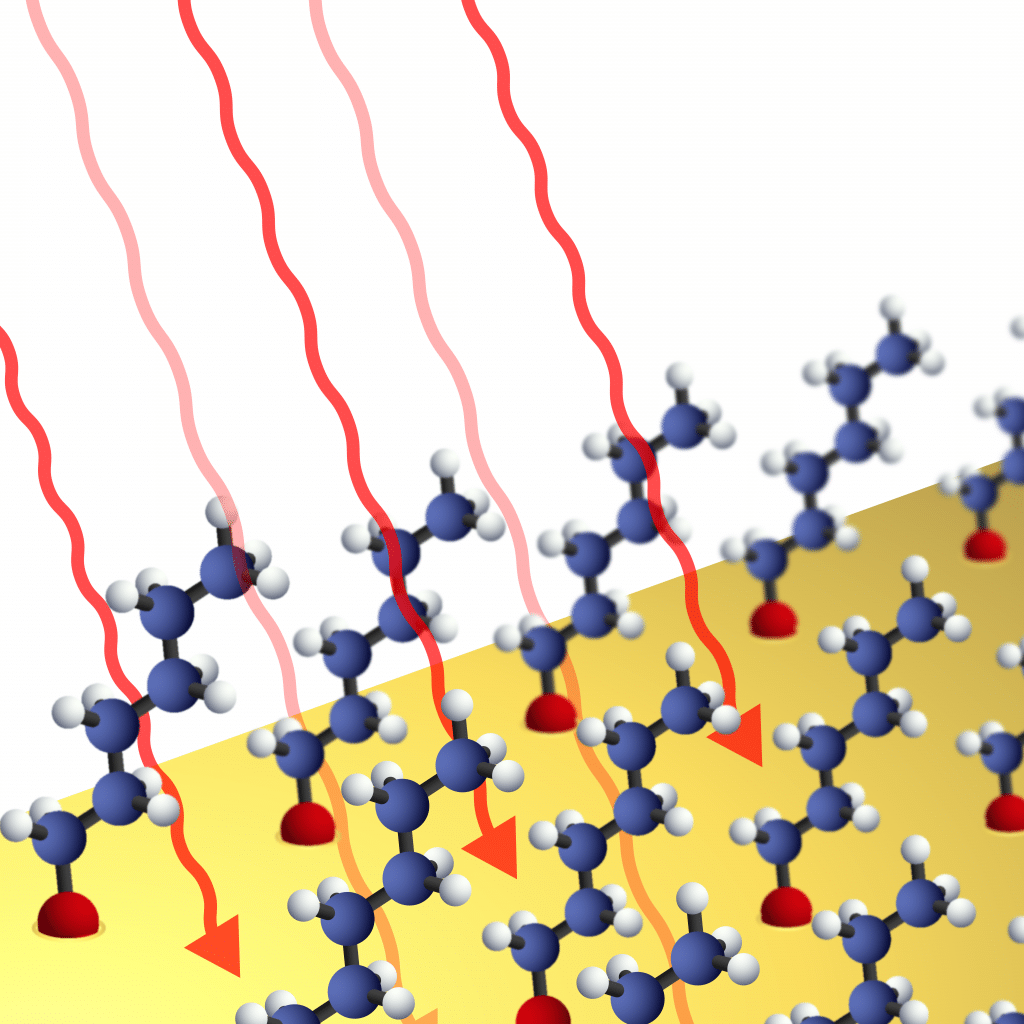Self-Assembled Monolayers in IR Spectroscopy
Infrared spectroscopy, typically infrared reflection absorption spectroscopy (IRRAS), is the favoured method used to characterise ultrathin layers like self-assembled monolayers. When infrared moves through a sample, some radiation is absorbed and some is transmitted. IR detectors acquire these characteristic signals to generate a spectrum which represents the sample’s molecular fingerprint. This highlights the inherent value of IR spectroscopy; it can be used to elucidate molecular compositions as a function of characteristic absorption/transmission spectra.
IR spectroscopy can subsequently be used to generate a comprehensive spectroscopic pattern for a sample and assess various chemical and structural properties. So, how does this apply to self-assembled monolayers?

Understanding Self-Assembled Monolayers and Their Use
Self-assembled monolayers, or SAMs, are molecular assemblies which are spontaneously produced on surfaces via the process of absorption. In recent years, the interest in self-assembled monolayers has grown significantly although initial work was published in 1946. Today, they form one of the cornerstones of modern nanotechnology and are increasingly deployed in numerous technical fields to produce ultrathin, ordered films with various applications. Packaging materials, for instance, are increasingly manufactured via molecular self-assembly.
Infrared characterization of self-assembled monolayers is difficult because they have low concentrations on growth substrates.
Self-assembled monolayers tend to be constructed on metal or metal oxide surfaces. Extremely thin coatings on metal surfaces allow for analysis by reflection of radiation on the IR region from the substrate to the detector in a specular reflectance mode. This is an external reflection technique where light is reflected from a smooth, solid surface on which the angles of incidence and reflection are perfectly equal. Self-assembled monolayers can be examined when a reflective metal, such as gold, has an unknown material deposited on it.
Use of Gold in Finding an Absorption Spectrum of a Self-Assembled Monolayer
One of the main benefits of using gold substrates to characterise self-assembled monolayers is its high IR reflectivity. The IR beam is reflected from the gold and interacts with the self-assembled monolayer—and because gold is non-reacting substance—the spectrum that results is exclusively an absorption spectrum of the coating material. High-purity ultra-flat gold surfaces are subsequently ideal for studying self-assembled monolayers.
The extreme planarity and thin design simultaneously provides cost-benefits while also eliminating the danger of SAM substrates reacting with the self-assembled monolayer, or oxygen in the atmosphere.
Ultra-Flat Gold Surfaces from Platyps Tech
At Platypus Technologies, we provide a range of ready-to-use ultra-flat surfaces intended for nanotechnology applications like self-assembled monolayer studies. Infrared spectroscopy is the ideal paradigm for understanding self-assembled monolayers by finding their absorption pattern, and gold is a brilliant material for such investigations due to its non-reactivity. Interested in learning more? Contact a member of the team today.